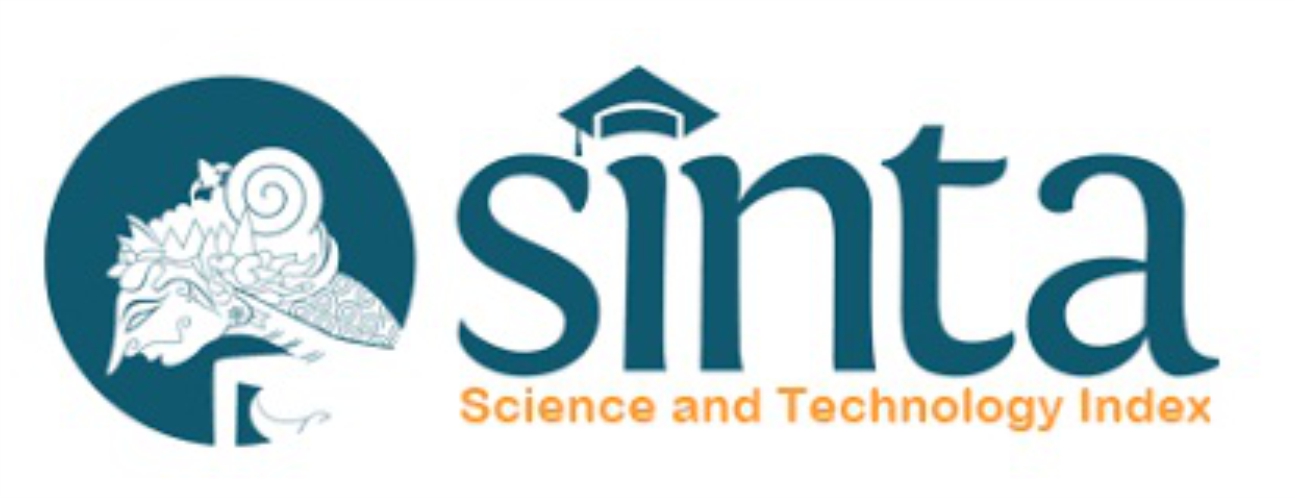Uji Antibakteri Ekstrak Daun Lantana camara L. terhadap Staphylococcus epidermidis, Staphylococcus aureus, dan Escherichia coli
Abstract
Tembelekan disebut Lantana camara L. atau Lantana aculeata L. termasuk kedalam famili tumbuhan Verbenaceae. Tanaman ini dikenal dengan nama daerah bunga pagar, kayu singapur dan teterapan merupakan jenis tumbuhan yang banyak dimanfaatkan oleh masyarakat secara tradisional sebagai obat luka, bisul, peluruh air seni, batuk, peluruh keringat, dan penurun panas. Tanaman ini tumbuh liar dan memiliki metabolit sekunder yang beragam, khususnya pada bagian daun, seperti senyawa terpenoid yang termasuk senyawa atsiri, flavonoid, fenol, saponin, alkaloid, steroid, tanin, dan quinon. Penelitian ini bertujuan untuk melihat efek penggunaan ekstrak daun tembelekan (Lantana camara L.) dengan konsentrasi 3%, 6%, 9% dapat menghambat pertumbuhan bakteri Staphylococcus aureus, Staphylococcus epidermidis, dan Escherichia coli. Jenis penelitian yang digunakan yaitu penelitian eksperimental laboratorium, meliputi penyiapan sampel, pembuatan ekstrak, uji skrining fitokimia, dan pengujian aktivitas antibakteri. Hasil penelitian menunjukkan ekstrak etanol daun tembelekan mengandung senyawa flavonoid, alkaloid, saponin, dan tanin sehingga memiliki potensi antibakteri terhadap S. aureus dengan konsentrasi 9% sebesar 17,06±0,24 mm, S. epidermidis dengan konsentrasi 9% sebesar 17,53±0,22 mm sedangkan E. coli dengan konsentrasi 9% sebesar 16,9±0,08 mm. Kategori zona hambat yang terbentuk adalah kuat, sedangkan kontrol positif memiliki kategori sangat kuat dengan rata-rata zona hambat ketiga bakteri yaitu S. aureus 24,5 mm, S. epidermidis 24,95 mm, dan E. coli 23,65 mm.
Keywords
Full Text:
PDF (Bahasa Indonesia)References
E. Tambaru, “Keragaman Jenis Tumbuhan Obat Indigenous,” Ilmu Alam dan Lingkung., vol. 8, no., pp. 7–13, 2017.
G. M. Nurdin, “Uji Aktivitas Antibakteri Ekstrak Daun Tembelekan (Lantana camara Linn) Terhadap Pertumbuhan Staphylococcus aureus dan Escherichia coli,” Biocelebes, vol. 15, no. 2, 2022, doi: 10.22487/bioceb.v15i2.15540.
Satrimafitrah pasjan.,Ruslan.,Mappiratu.,Lestari putri ikatami., “Uji Aktivitas Antibakteri Ekstrak Daun Tanaman Tembelekan (Lantana camara Linn) dari beberapa Tingkat Kepolaran Pelarut,” vol. 4, no. 3, pp. 244–253, 2018.
S. Purwati, S. V. T. Lumora, and Samsurianto, “Skrining Fitokimia Daun Saliara (Lantana camara L) Sebagai Pestisida Nabati Penekan Hama dan Insidensi Penyakit Pada Tanaman Holtikultura di Kalimantan Timur,” Pros. Semin. Nas. Kim. 2017, 2017.
R. KEMENKES, “Pedoman Penggunaan Antibiotik,” Pedoman Pengguna. Antibiot., 2021.
M. Sari, A. Chan, G. S. Nasution, and D. K. Mendrofa, “Uji Antiseptik Sabun Cair Ekstrak Daun Lantana camara L. Terhadap Pertumbuhan Staphylococcus sp.,” Maj. Farmasetika, vol. 7, no. 3, p. 227, 2022, doi: 10.24198/mfarmasetika.v7i3.37876.
G. Y. C. Cheung, J. S. Bae, and M. Otto, “Pathogenicity and virulence of Staphylococcus aureus,” Virulence, vol. 12, no. 1. 2021. doi: 10.1080/21505594.2021.1878688.
S. Raue et al., “The Genome of Staphylococcus epidermidis O47,” Front. Microbiol., vol. 11, 2020, doi: 10.3389/fmicb.2020.02061.
M. K. Kuswiyanto, S.Si., Bakteriologi 2 Buku Ajar Analis Kesehatan. 2017.
J. Jang, H. G. Hur, M. J. Sadowsky, M. N. Byappanahalli, T. Yan, and S. Ishii, “Environmental Escherichia coli: ecology and public health implications—a review,” Journal of Applied Microbiology, vol. 123, no. 3. 2017. doi: 10.1111/jam.13468.
Departemen Kesehatan Republik Indonesia, Farmakope Indonesia Edisi III, Edisi ke-. jakarta: Departemen Ksehatan Republik Indonesia., 1979.
M. Sari, D. Suryanto, and Yurnaliza, “Antimicrobial activity of lactic acid bacteria isolated from bekasam against Staphylococcus aureus ATCC 25923, Escherichia coli ATCC 25922, and Salmonella sp,” in IOP Conference Series: Earth and Environmental Science, 2018, vol. 130, no. 1. doi: 10.1088/1755-1315/130/1/012011.
Departemen Kesehatan Republik Indonesia, Cara Pembuatan Simplisia. Jakarta: Departemen Kesehatan Republik Indonesia; 1985. 1985.
P. Parwati, A. Ridhay, and S. Syamsuddin, “Uji Aktivitas Antibakteri Ekstrak Bunga Tembelekan (Lantana camara Linn) Dari Beberapa Tingkat Kepolaran Pelarut,” Kovalen J. Ris. Kim., vol. 5, no. 1, pp. 39–47, 2019, doi: 10.22487/kovalen.2019.v5.i1.10111.
A. Mansoori et al., “Phytochemical Characterization and Assessment of Crude Extracts From Lantana camara L. for Antioxidant and Antimicrobial Activity,” Front. Agron., vol. 2, 2020, doi: 10.3389/fagro.2020.582268.
O. Ofeogbu, J. V. Anyam, and O. P. Onuwa, “The effect of extraction protocol on the phytochemical and antimicrobial activities of Lantana camara leaf extract found within a local environment,” J. Basic Appl. Chem., vol. 3, no. 1, 2013.
A. A. Ayalew, “Chromatographic and spectroscopic determination of solvent-extracted Lantana camara leaf oil,” J. Int. Med. Res., vol. 48, no. 10, 2020, doi: 10.1177/0300060520962344.
D. N. Tamuntuan, E. De Queljoe, and O. S. Datu, “Wound Healing Effectiveness Test Of Extract Lantana camara L Ointment Against Incision Wound In White Male Rats ( Rattus Norvegicus),” J. Pharmacon, vol. 10, no. 3, 2021.
A. W. Septama, N. Simbak, and E. P. Rahmi, “Prospect of plant-based flavonoids to overcome antibacterial resistance: A mini-review,” Walailak Journal of Science and Technology, vol. 17, no. 5. 2020. doi: 10.48048/wjst.2020.5583.
A. K. Farha et al., “Tannins as an alternative to antibiotics,” Food Bioscience, vol. 38. 2020. doi: 10.1016/j.fbio.2020.100751.
Y. Liu, Y. Cui, L. Lu, Y. Gong, W. Han, and G. Piao, “Natural indole-containing alkaloids and their antibacterial activities,” Archiv der Pharmazie, vol. 353, no. 10. 2020. doi: 10.1002/ardp.202000120.
A. H. Betti, J. D. Fleck, and S. G. Verza, “Saponins: Occurrence in nature and biological activities,” in Saponins: Types, Sources and Research, 2016.
Z. Semdé et al., “Chemical composition, antioxidant and antimicrobial activities of Lantana camara Linn leaves essential oil from Burkina Faso,” GSC Biol. Pharm. Sci., vol. 5, no. 3, 2018, doi: 10.30574/gscbps.2018.5.3.0142.
S. O. Oladoye, “Lantana camara: Phyto-constituents and Antimicrobial Activity Study,” Pan African J. Life Sci., vol. 5, no. 2, 2021, doi: 10.36108/pajols/1202.50.0270.
S. Y. C. Tong, J. S. Davis, E. Eichenberger, T. L. Holland, and V. G. Fowler, “Staphylococcus aureus infections: Epidemiology, pathophysiology, clinical manifestations, and management,” Clin. Microbiol. Rev., vol. 28, no. 3, 2015, doi: 10.1128/CMR.00134-14.
W. F. Oliveira et al., “Staphylococcus aureus and Staphylococcus epidermidis infections on implants,” Journal of Hospital Infection, vol. 98, no. 2. 2018. doi: 10.1016/j.jhin.2017.11.008.
T. H. Nguyen, M. D. Park, and M. Otto, “Host response to Staphylococcus epidermidis colonization and infections,” Frontiers in Cellular and Infection Microbiology, vol. 7, no. MAR. 2017. doi: 10.3389/fcimb.2017.00090.
J. M. Fleckenstein and F. M. Kuhlmann, “Enterotoxigenic Escherichia coli Infections,” Current Infectious Disease Reports, vol. 21, no. 3. 2019. doi: 10.1007/s11908-019-0665-x.
DOI: https://doi.org/10.18860/jip.v8i1.17308
Refbacks
- There are currently no refbacks.
Copyright (c) 2023 Journal of Islamic Pharmacy

This work is licensed under a Creative Commons Attribution-ShareAlike 4.0 International License.
© 2023 Journal of Islamic Pharmacy













